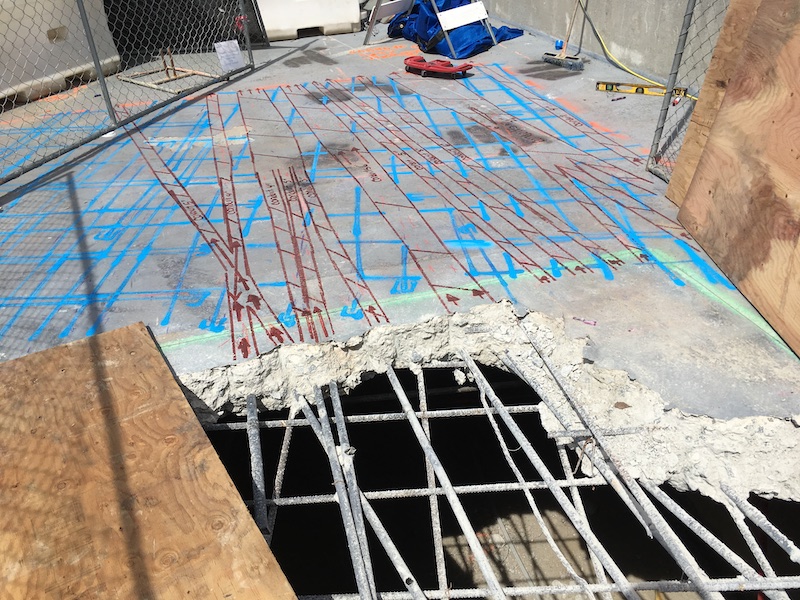Concrete Scanning: A Crucial Action Towards Making Sure Architectural Integrity and Safety And Security
In the realm of construction and facilities upkeep, the value of concrete scanning can not be overemphasized. This precise process holds the essential to revealing prospective threats hidden below the surface of relatively solid structures. By using innovative technology and techniques, concrete scanning acts as a crucial tool in making certain that the honesty and safety and security of bridges and structures are upheld to the greatest standards. Nonetheless, past its surface-level ramifications, the role of concrete scanning extends much deeper than fulfills the eye.
Value of Concrete Scanning
Concrete scanning plays an essential role in making certain the architectural honesty and safety and security of buildings and facilities jobs. By utilizing sophisticated technologies such as ground-penetrating radar (GPR) and electro-magnetic induction, professionals can non-destructively evaluate concrete structures to find potential problems, spaces, embedded items, and reinforcement layout. This procedure makes it possible for early discovery of anomalies that can jeopardize the stability of a framework, stopping expensive damages and making certain the safety and security of residents.
Prior to boring, cutting, or coring into concrete, scanning assists determine the accurate locations of rebar, post-tension wires, and various other embedded elements, lowering the danger of unintended hits that can lead to architectural weak points. In addition, concrete scanning aids in quality control by confirming the thickness of concrete covers and finding any inconsistencies that may impact the general resilience of the structure.
Innovation for Concrete Assessment

Advantages of Early Detection
Timely discovery of architectural issues can considerably mitigate threats and make certain the long life of construction tasks. By recognizing prospective problems at an early stage in the building and construction process, stakeholders can take positive steps to address problems prior to they rise right into bigger and a lot more costly problems. One of the crucial advantages of very early detection is the avoidance of architectural failings, which can pose serious safety and security risks and lead to project delays and economic losses.
In addition, very early discovery enables prompt fixings and upkeep, which can aid expand the lifespan of the framework. By dealing with issues without delay, building groups can stay clear of pricey repair work or also the requirement for premature substitute of structural components. This proactive strategy not just saves money and time yet additionally improves the general security and resilience of the construction job.
In addition, very early detection can enhance task preparation and decision-making by providing stakeholders with useful understandings right into the condition of the structure. Equipped with this info, job managers can make educated selections concerning construction timelines, products, and methods, bring about much more reliable and effective project results.
Ensuring Architectural Stability
Making sure the architectural stability of a building and construction project is paramount to its security and long life. Concrete scanning plays an essential function in making certain structural security by identifying possible concerns such as spaces, delamination, or support rust that might jeopardize the stability of the framework over time.
By utilizing innovative scanning innovations like ground-penetrating radar (GPR) and electro-magnetic induction, building experts can non-invasively evaluate concrete frameworks to identify locations of problem underneath the surface area. This aggressive technique enables the early discovery of defects or weak points, allowing timely fixings or reinforcement to avoid structural failures.
Regular concrete scanning during various building and construction stages and throughout the life navigate to these guys cycle of a framework can aid maintain its stability, reduce risks, and make certain the security of occupants. By focusing on architectural security with concrete scanning, building and construction tasks can improve their resilience and durability, eventually adding to greater safety and long life.

Stopping Vital Failures
To secure against tragic events, thorough tracking and aggressive maintenance are vital in averting essential failures within architectural frameworks. Detecting prospective issues before they escalate is key to protecting against structural failings. Executing regular inspections, such as concrete scanning, can disclose surprise problems like gaps, fractures, or deterioration that could compromise the integrity of a structure. By using advanced scanning modern technologies like Ground Penetrating Radar (GPR) or Concrete X-ray, designers can non-destructively analyze the condition of concrete and recognize weak points that require support or repair work - RainierGPR Service Areas.

Conclusion
Finally, concrete scanning plays a critical function in making certain structural honesty and security by utilizing innovative technology for early detection of potential issues. This proactive approach helps prevent crucial failures and guarantees the stability of structures. It is important to focus on concrete evaluation as a common method to secure the durability and security of buildings and infrastructure.
Concrete scanning plays an important duty in ensuring the architectural honesty and safety of buildings and framework projects. Additionally, concrete scanning help in top quality control by confirming the thickness of concrete covers and detecting any type of discrepancies that might impact the general toughness of the structure. Concrete scanning plays an essential function in ensuring architectural stability by identifying prospective issues such as gaps, delamination, or reinforcement corrosion that might compromise the honesty of the structure over time.

In verdict, concrete scanning plays a critical role in making sure structural honesty and security by utilizing advanced technology for early discovery of potential concerns.